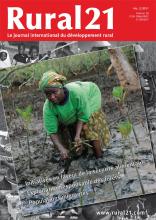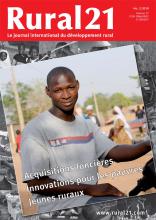Land Library
Welcome to the Land Portal Library. Explore our vast collection of open-access resources (over 74,000) including reports, journal articles, research papers, peer-reviewed publications, legal documents, videos and much more.
/ library resources
Showing items 1 through 9 of 28.Almost two decades have passed since China first enacted legislation to protect farmland from conversion to nonagricultural use.
L’urbanisation est souvent considérée comme ayant des effets néfastes sur le développement rural. En fait, c’est tout le contraire.
Strong economic growth in urban areas has not led to rapid urbanization in Ethiopia, possibly as a result of prevailing land tenure policies.
Rural development and urbanisation are often seen as competing, but in most cases are intimately linked. It is essential that policies re? ect and support the many positive links between rural and urban areas, enterprises and people.
In today’s China, about 220 million rural migrant workers are on the move – this is more than two thirds of the US population – and their number is set to increase in the course of the country’s urbanisation process.
More and more young people are leaving the rural areas and migrating to the cities. Although the industrial and the developing nations come from different starting points, such migration ultimately has the same effect on village life and the rural areas everywhere.
Dans les pays en développement, l'élevage représente plus d'un tiers du produit intérieur agricole brut ; la croissance et la transformation rapides du secteur de l'élevage dans de grandes régions de la planète ont débouché sur une amélioration des revenus et de la situation alimentaire d?un gran
In comparison to other African countries, Ethiopia has a low urbanization rate. According to the World Bank World Development Report (WDR) 2009, Sub-Sahara Africa is 30% urbanized, whereas Ethiopia is only 10.9% urbanized.






